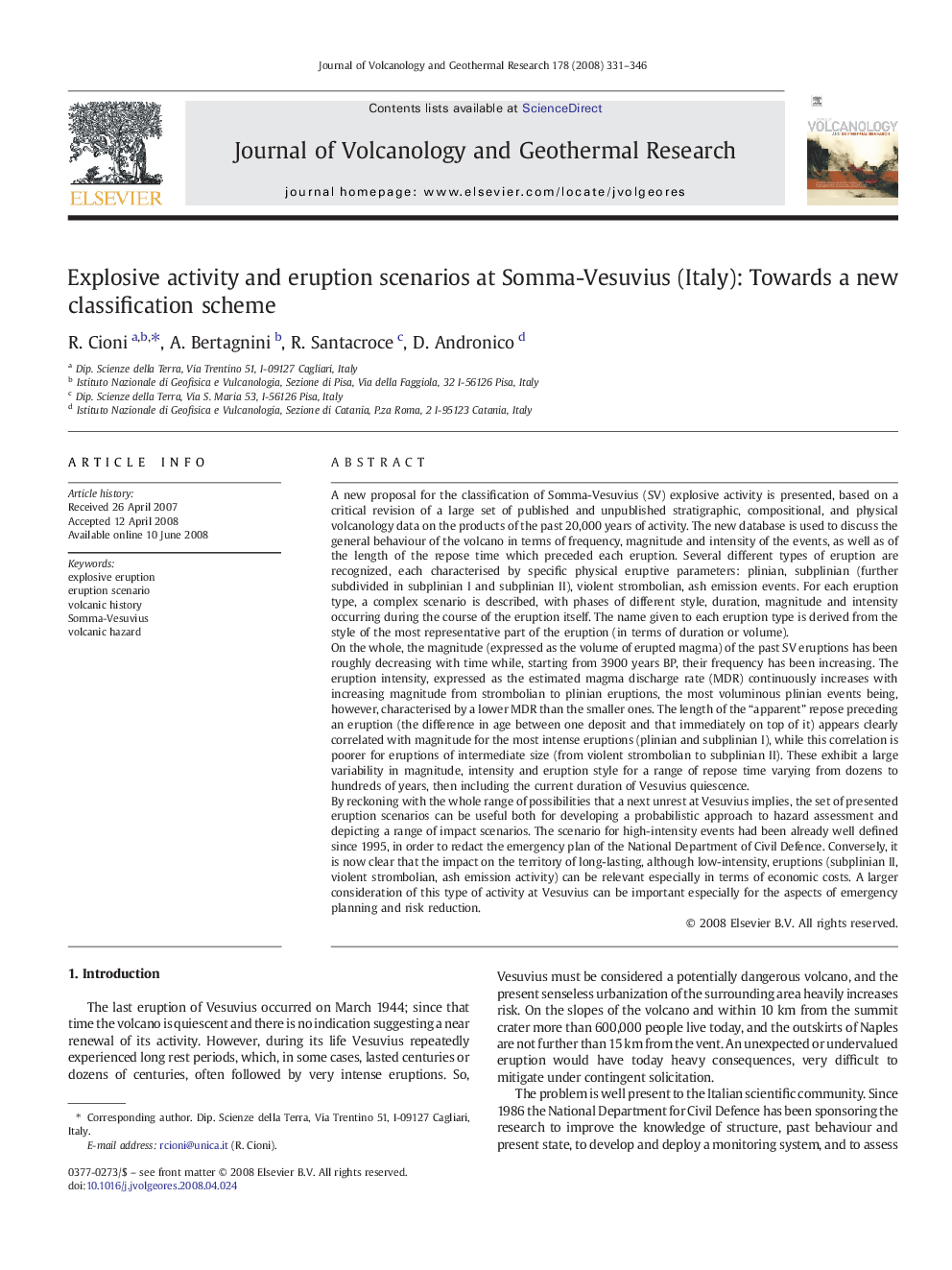| کد مقاله | کد نشریه | سال انتشار | مقاله انگلیسی | نسخه تمام متن |
|---|---|---|---|---|
| 4713425 | 1353890 | 2008 | 16 صفحه PDF | دانلود رایگان |

A new proposal for the classification of Somma-Vesuvius (SV) explosive activity is presented, based on a critical revision of a large set of published and unpublished stratigraphic, compositional, and physical volcanology data on the products of the past 20,000 years of activity. The new database is used to discuss the general behaviour of the volcano in terms of frequency, magnitude and intensity of the events, as well as of the length of the repose time which preceded each eruption. Several different types of eruption are recognized, each characterised by specific physical eruptive parameters: plinian, subplinian (further subdivided in subplinian I and subplinian II), violent strombolian, ash emission events. For each eruption type, a complex scenario is described, with phases of different style, duration, magnitude and intensity occurring during the course of the eruption itself. The name given to each eruption type is derived from the style of the most representative part of the eruption (in terms of duration or volume).On the whole, the magnitude (expressed as the volume of erupted magma) of the past SV eruptions has been roughly decreasing with time while, starting from 3900 years BP, their frequency has been increasing. The eruption intensity, expressed as the estimated magma discharge rate (MDR) continuously increases with increasing magnitude from strombolian to plinian eruptions, the most voluminous plinian events being, however, characterised by a lower MDR than the smaller ones. The length of the “apparent” repose preceding an eruption (the difference in age between one deposit and that immediately on top of it) appears clearly correlated with magnitude for the most intense eruptions (plinian and subplinian I), while this correlation is poorer for eruptions of intermediate size (from violent strombolian to subplinian II). These exhibit a large variability in magnitude, intensity and eruption style for a range of repose time varying from dozens to hundreds of years, then including the current duration of Vesuvius quiescence.By reckoning with the whole range of possibilities that a next unrest at Vesuvius implies, the set of presented eruption scenarios can be useful both for developing a probabilistic approach to hazard assessment and depicting a range of impact scenarios. The scenario for high-intensity events had been already well defined since 1995, in order to redact the emergency plan of the National Department of Civil Defence. Conversely, it is now clear that the impact on the territory of long-lasting, although low-intensity, eruptions (subplinian II, violent strombolian, ash emission activity) can be relevant especially in terms of economic costs. A larger consideration of this type of activity at Vesuvius can be important especially for the aspects of emergency planning and risk reduction.
Journal: Journal of Volcanology and Geothermal Research - Volume 178, Issue 3, 20 December 2008, Pages 331–346